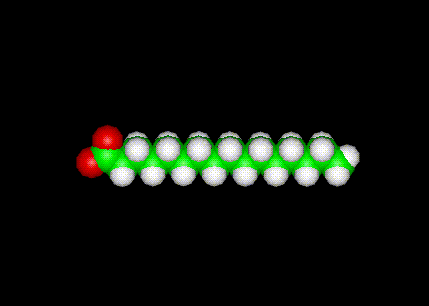Palmitic acid, also called hexadecanoic acid, is one of the most common saturated fatty acids found in animals and plants. It is a white solid that melts at 63.1°C and its chemical formula is CH3(CH2)14COOH. As its name tells us, it is found in palm oil but also in butter, cheese, milk and meat.
Palmitate is a term for the salts or esters of palmitic acid. The palmitate anion is the observed form of palmitic acid at physiological pH. Palmitic acid is the first fatty acid produced during lipogenesis (fatty acid synthesis) and from which longer fatty acids can be produced. Palmitate negatively feeds back on acetyl-CoA carboxylase (ACC) which is responsible for converting acetyl-ACP to malonyl-ACP on the growing acyl chain, thus preventing further palmitate generation. Palmitate is an antioxidant and a vitamin A compound added to low fat milk to replace the vitamin content lost through the removal of milk fat. Palmitate is attached to the alcohol form of vitamin A, retinol, in order to make vitamin A stable in milk. Derivatives of palmitic acid were used in World War II to produce napalm. Reduction of palmitic acid yields cetyl alcohol.
Palmitic acid is the first fatty acid produced during lipogenesis and from which longer fatty acids can be produced.
| Palmitic acid | |
|---|---|
| Chemical name | Hexadecanoic acid |
| Other names | Palmitic
acid hexadecylic acid cetylic acid |
| Chemical formula | C16H32O2 |
| Molecular mass | 256.42 g/mol |
| CAS number | [57-10-3] |
| Density | 0.853 g/cm3 at 62 °C |
| Melting point | 63-64 °C |
| Boiling point | 215 °C at 15 mmHg |
| SMILES | CCCCCCCCCCCCCCCC(=O)O |
| Disclaimer and references | |
